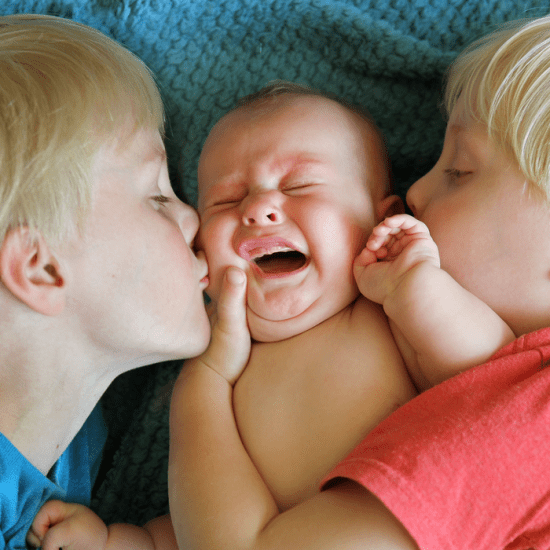Close physical contact between babies and those who care for them is important. We’ve known that for years. A new study shows us that not enough close physical contact has an effect on babies at the molecular level of their very cells. It’s something that can be seen even four years later. That’s according to a new study published by the University of British Columbia, in conjunction with the BC Children’s Hospital Research Institute.
The study found that the molecular profile of children’s cells was immature for their age in those four-year-olds who had experienced more distress and less close physical contact as infants. This begs the question: are such children behind their peers on a biological level? What would this mean for their health?
In an article for Science Daily, Michael Kobor, a Professor at the UBC Department of Medical Genetics and head of the “Healthy Starts” theme at BC Children’s Hospital Research Institute, explained what the researchers think it means. “In children, we think slower epigenetic aging might indicate an inability to thrive,” said Kobor.
While no one knows, at this point, what this lack of close physical contact, and the resultant lag in the development of cell profiles means in terms of child development or adult health, we’re a bit farther ahead than you might think. This study actually builds on the findings of a similar study performed on, um, rats.
Close Physical Contact in Humans
This study, however, is the first ever to show that the act of touching, for humans, is so important that having or not having close physical contact affects us at the molecular level. Whether our mothers and fathers hug and cuddle us may even have lifelong consequences for the epigenome. This is our personal biochemistry makeup that is responsible for the way our genes express themselves.
The study, published in Development and Psychopathology on November 22, included 94 healthy children in British Columbia. Their parents were asked to keep a journal detailing their 5-week-old babies’ behavior in terms of fussing, sleeping, crying, and feeding. They were also told to record how long they had close physical contact with their babies. Fast forward 4 ½ years later. This is when researchers swooped in to take painless DNA samples of the children, by swabbing the insides of their cheeks.
The researchers were looking for something specific in those DNA samples. They were looking for DNA methylation, a biochemical change where some sections of a chromosome get tagged with small molecules made from carbon and hydrogen. These little molecules serve as “dimmer switches” that tell each gene how active it should be, which mean the molecules affect the way the cells function.
Close Physical Contact and DNA
The scientists in the British Columbia study saw methylation differences between children who’d had lots of close physical contact and those who’d had little. The difference in methylation was consistent and was seen in five places in the DNA. Two of these methylation sites are inside the genes. One of them plays a role in the immune system, while the other has to do with the metabolism. The scientists don’t yet know what this will mean for the children in terms of their development and future health.
What they do know is that children who were experiencing more distress, but receiving less close physical contact, had a lower epigenetic age than expected for their age. Many recent studies have shown a link between this developmental lag and poor health.
“We plan to follow up on whether the ‘biological immaturity’ we saw in these children carries broad implications for their health, especially their psychological development,” says lead author and postdoctoral fellow Sarah Moore. “If further research confirms this initial finding, it will underscore the importance of providing physical contact, especially for distressed infants.”
Asked how parents can gauge exactly how much contact is “enough”, Moore said, “Since we don’t have follow up outcomes of these children, we can’t extrapolate. I would say that if we further research this combination of infant distress and level of contact, that perhaps the ‘right amount’ of contact depends on the child’s needs, since we found that an association between contact and epigenetic age depends on child distress levels.”
In other words, if your baby cries, hold him/her. Then simply lather, rinse, and repeat as needed. One thing for sure: holding that baby can only help development, as it’s impossible to spoil an infant with too much close physical contact.
